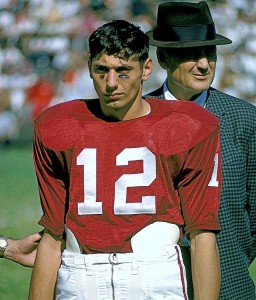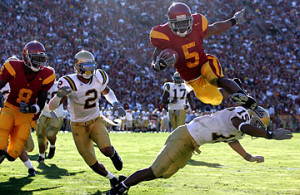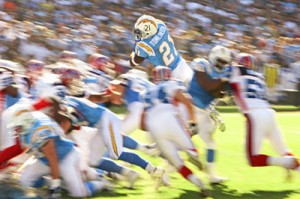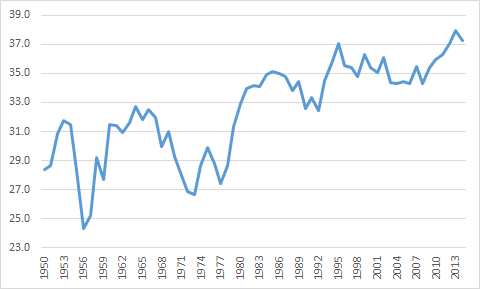Earlier this week, ESPN announced three key changes to the way its Total QBR metric is calculated. Let’s review them:
1) Interception returns
The base statistic used throughout QBR is EPA, which stands for Expected Points Added per play. So if an interception was returned for a touchdown, that play would obviously have a large negative EPA. For example, when the Chargers had 3rd-and-8 at the St. Louis 8-yard line in the 2nd quarter of a game in week 12 of last season, PFR calculated the Expected Points for that situation as +3.58 for San Diego. When Rivers threw a pick-6 on that play, that situation turned into a -7, which is a swing of 10.58 points. Presumably ESPN’s formula came to a pretty similar result. And that leaves Rivers with an enormous penalty.
So now, instead of penalizing the quarterback for the actual EPA swing, ESPN will penalize the quarterback for the expected swing based on the type and location of the interception. This means much smaller penalties on pick sixes, and (one would assume) slightly larger ones on all other interceptions.
This makes sense to me, although it highlights the question of what is QBR actually supposed to measure. This change, while eliminating some of the randomness involved in a play, moves away from the way QBR has been tied to EPA. On some (though not all) interceptions, whether a player returns it 90 yards or 10 yards is completely random, so penalizing a quarterback a fixed amount (that varies by type and location) is likely going to improve the predictability of the model. What I mean by that is that QBR will become “stickier” from time period to time period, which is a good thing (if you like predictive models). [continue reading…]









